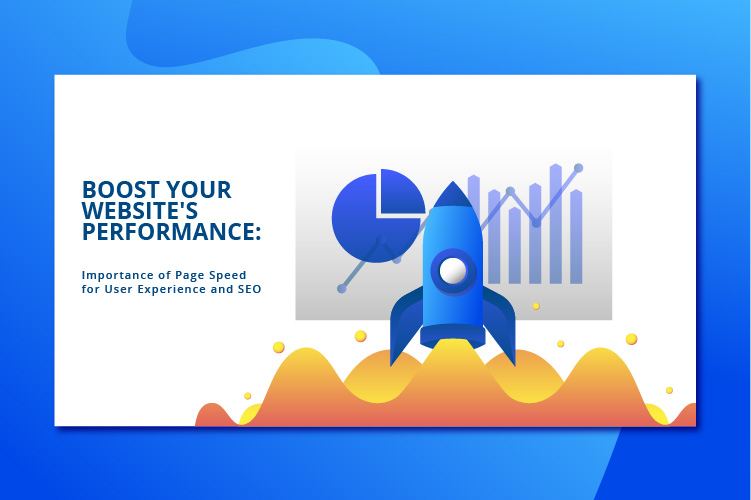
The Crucial Role of Page Speed in Enhancing User Experience and SEO Rankings
Introduction
In today’s digital landscape, where attention spans are shorter than ever, the speed at which a webpage loads can make or break user engagement and search engine visibility. Page speed, often overlooked in the grand scheme of website optimization, holds immense significance for both user experience (UX) and search engine optimization (SEO). In this blog post, we’ll delve into the importance of page speed and explore how it impacts both user satisfaction and SEO rankings.
What is Page Speed?
Page speed refers to the time it takes for a webpage to fully load its content, including text, images, scripts, and other elements. It is typically measured in seconds and plays a critical role in shaping user perceptions of a website’s performance. Page speed encompasses various metrics, including time to first byte (TTFB), first contentful paint (FCP), and time to interactive (TTI), each providing insights into different aspects of loading times.
Impact on User Experience
The significance of page speed in shaping user experience cannot be overstated. Studies have consistently shown that users expect websites to load quickly, with any delays leading to frustration and abandonment. A slow-loading website not only hampers user satisfaction but also increases bounce rates, as impatient visitors are quick to seek alternatives. In today’s fast-paced digital environment, where consumers have countless options at their fingertips, a seamless and rapid browsing experience is paramount to retaining audience engagement and loyalty.
Impact on SEO Rankings
In addition to its influence on user experience, page speed is a crucial factor in determining a website’s search engine rankings. Search engines like Google prioritize user-centric metrics, including page speed, when ranking websites in search results. Google’s algorithm considers page speed as a ranking factor, with faster-loading pages often receiving preferential treatment in search results. By prioritizing page speed optimization, website owners can improve their chances of ranking higher in search engine results pages (SERPs) and driving organic traffic to their sites.
Factors Affecting Page Speed
Several factors contribute to the speed at which a webpage loads, including:
- Hosting Provider: The quality and performance of the hosting provider play a significant role in determining server response times and overall page speed.
- File Size and Compression: Large files, such as images and videos, can significantly slow down page loading times. Compressing files and optimizing images can help reduce load times.
- Browser Caching: Caching allows browsers to store static files locally, reducing the need to fetch resources from the server upon subsequent visits.
- Code Structure and Efficiency: Well-structured and optimized code can streamline the rendering process and improve page speed.
- Content Delivery Network (CDN): CDNs distribute website content across multiple servers worldwide, reducing latency and improving load times for users across different geographic locations.
Tools to Measure Page Speed
Several tools are available to measure and analyze page speed performance, including:
- Google PageSpeed Insights: A free tool provided by Google that analyzes webpage performance and provides recommendations for improvement.
- GTmetrix: A comprehensive tool that analyzes page speed performance and provides actionable insights for optimization.
- Pingdom Website Speed Test: Another popular tool that measures page speed and identifies performance bottlenecks.
Strategies to Improve Page Speed
Optimizing page speed requires a multifaceted approach, incorporating various strategies such as:
- Minimizing HTTP Requests: Reduce the number of requests by combining and minifying CSS and JavaScript files.
- Optimizing Images: Compress images without compromising quality and utilize responsive image formats.
- Implementing Content Delivery Networks (CDNs): Distribute website content across multiple servers to reduce latency and improve load times.
- Minimizing Server Response Times: Optimize server configurations and choose a reliable hosting provider to reduce TTFB.
Case Studies of Successful Optimization Efforts
Several businesses have successfully optimized their page speed, resulting in tangible improvements in user experience and SEO rankings. For example, a leading e-commerce retailer implemented image compression and browser caching, resulting in a 30% reduction in page load times and a 15% increase in conversions. Similarly, a news website improved its page speed by leveraging a CDN, leading to a 20% increase in organic traffic and a 10% boost in ad revenue.
Conclusion: Prioritize Page Speed for Better UX and SEO
Search engine rankings and user experience are significantly influenced by page speed. Website owners may increase customer happiness, lower bounce rates, and increase their chances of ranking better in search results by giving page speed optimization top priority.
The rising need for rapid satisfaction and the widespread use of mobile devices make investment in page speed optimization essential for success in today’s digital environment. So, boost the functionality of your website and see how it helps you become more visible and successful online.

